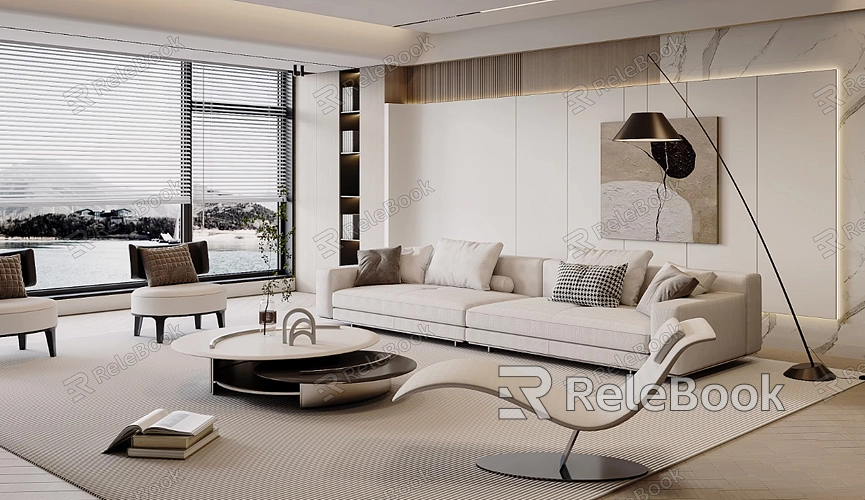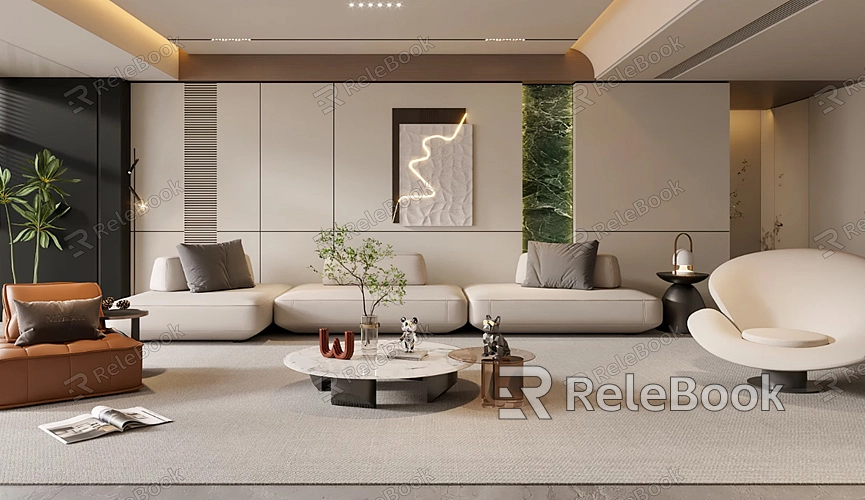How to Make High-Quality 3D Models?

Conceptualization and Planning
The foundation of any successful 3D model lies in thorough planning and a clear vision. Before you dive into modeling, take time to conceptualize your idea. Ask yourself what you want to create, whether it's a character, an environment, or a product. Sketching your ideas on paper or using tools like Photoshop can help visualize your concepts and define the key features of your model.
Once you have a clear concept, gather reference materials. References can include images, real-world objects, or even other 3D models. These references will guide your modeling process and ensure accuracy and realism. Planning also involves deciding on the software you'll use, the level of detail required, and the final output format. By starting with a well-thought-out plan, you set the stage for creating a high-quality 3D model.
Choosing the Right Software
The software you choose plays a crucial role in the quality of your 3D models. Various 3D modeling programs are available, each with its strengths and weaknesses. Popular options include:
1. Blender: A free, open-source software that's versatile and widely used for both beginner and advanced modeling.
2. Autodesk Maya: Known for its powerful modeling, texturing, and rigging tools, it's a favorite among professionals in the film and gaming industries.
3. ZBrush: Ideal for detailed sculpting and high-resolution models, often used for character modeling.
4. Cinema 4D: Excellent for motion graphics and easy-to-learn interface, making it a go-to for designers and animators.
When selecting software, consider your project's requirements, your level of expertise, and the industry standards. If you're just starting, Blender is a great choice due to its vast community and extensive tutorials. For more complex projects, industry-standard tools like Maya or ZBrush may be more appropriate.

Modeling Techniques and Best Practices
Once your concept is clear and you've chosen the right software, it's time to start modeling. Depending on your project, you might use different modeling techniques, such as polygonal modeling, NURBS modeling, or sculpting.
1. Polygonal Modeling: This technique involves creating models using polygons, primarily quads and triangles. It is widely used for creating everything from characters to architectural structures. Focus on keeping the polygon count optimized to balance detail with performance.
2. NURBS Modeling: Non-Uniform Rational B-Splines are used for creating smooth, mathematically defined surfaces, ideal for industrial design and automotive modeling. NURBS are particularly useful when you need precise control over curves and surfaces.
3. Sculpting: Sculpting allows for more organic and detailed models, often used for character creation. Programs like ZBrush and Blender's sculpting tools excel in this area, allowing you to add intricate details such as wrinkles, pores, and textures.
To achieve high-quality results, adhere to best practices such as maintaining clean topology, avoiding unnecessary geometry, and regularly checking the model's silhouette. Additionally, make use of subdivision surfaces to add smoothness without increasing the polygon count excessively.
Texturing and UV Mapping
Texturing is a critical step in making your 3D model look realistic. It involves applying colors, patterns, and materials to your model. However, before you can texture a model, you need to create a UV map, which is a 2D representation of your 3D model's surface.
1. UV Mapping: Start by unwrapping your model to create a UV map. The goal is to minimize stretching and distortion, ensuring that textures align correctly on your model. Most 3D software provides automatic unwrapping tools, but manual adjustments are often necessary for complex models.
2. Texturing: Once your UV map is ready, you can begin texturing. Use high-resolution textures and pay attention to details like dirt, wear, and scratches to enhance realism. Software like Substance Painter or Mari offers advanced tools for texturing, including smart materials and procedural textures that can save time and improve quality.
Remember to create normal maps, bump maps, and displacement maps where necessary, as these can add depth and detail to your model without increasing the polygon count.
Lighting and Rendering
Lighting can dramatically affect the appearance of your 3D model. Proper lighting highlights the details, enhances the textures, and adds depth to your model. Experiment with different lighting setups, such as three-point lighting, HDRI lighting, or environmental lighting, depending on the context of your model.
1. Three-Point Lighting: A standard setup that includes a key light, fill light, and backlight. This setup is ideal for showcasing models in a clean and controlled environment.
2. HDRI Lighting: High Dynamic Range Imaging uses a 360-degree image to provide realistic lighting and reflections. It's commonly used in rendering environments and product visualizations.
3. Rendering: The final step involves rendering your model using a rendering engine like Cycles (Blender), Arnold (Maya), or V-Ray. Pay attention to settings like resolution, sampling, and post-processing effects such as bloom or depth of field. A high-quality render can significantly enhance the visual appeal of your model.
Rigging and Animation (Optional)
If your 3D model is meant for animation, rigging is an essential step. Rigging involves creating a skeleton for your model that animators can use to move and pose the model. This step is crucial for character models in games, films, or any interactive medium.
1. Rigging: Build a skeleton or armature that defines how your model will move. Pay attention to joint placement, weight painting, and IK (Inverse Kinematics) setups to ensure smooth and realistic movements.
2. Animation: Once rigged, you can animate your model using keyframes, motion capture data or other animation techniques. Even if you're not an animator, understanding the basics of rigging and animation can help you create models that are ready for use in various projects.
Optimization and Exporting
After completing your model, it's crucial to optimize it for the intended use. Optimization involves reducing the polygon count, cleaning up the mesh, and ensuring the textures are appropriately sized. This step is particularly important for models intended for real-time applications like games or VR, where performance is a concern.
1. Polygon Reduction: Use tools like decimation or retopology to reduce the polygon count without sacrificing too much detail.
2. LOD (Level of Detail): Create different levels of detail for your model to be used at varying distances in real-time applications.
3. Exporting: Finally, export your model in the appropriate format, such as OBJ, FBX, or STL, depending on the intended use. Ensure that all textures, animations, and other assets are correctly linked and included in the exported file.
FAQ
What software is best for beginners in 3D modeling?
Blender is highly recommended for beginners due to its user-friendly interface, extensive community support, and powerful features. It’s also free, making it accessible to everyone.
How can I improve the realism of my 3D models?
Focus on details like texturing, lighting, and shading. Use high-resolution textures, experiment with different lighting setups, and consider adding imperfections like scratches or dirt to enhance realism.
How do I optimize my 3D models for games?
Reduce polygon count, create efficient UV maps, and use appropriate texture sizes. Also, consider creating LODs (Levels of Detail) to maintain performance across different hardware.
What is the difference between a normal map and a bump map?
A normal map provides more detailed and accurate surface information than a bump map. It uses RGB values to simulate how light interacts with the surface, resulting in more realistic textures.
Can I animate my 3D model without rigging?
Rigging is typically required for complex animations involving articulated movement. However, simple animations like object rotation or translation can be done without rigging.

